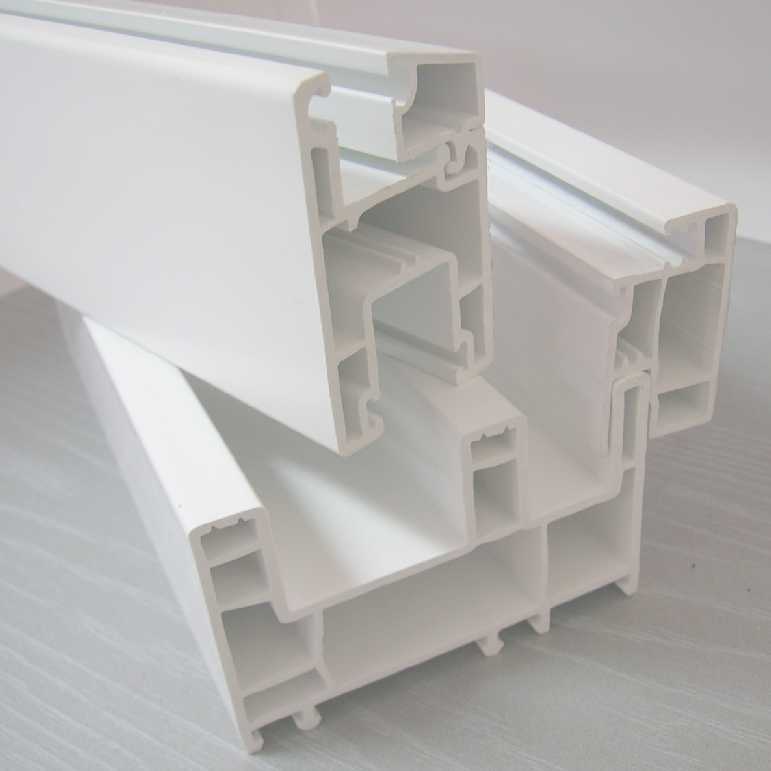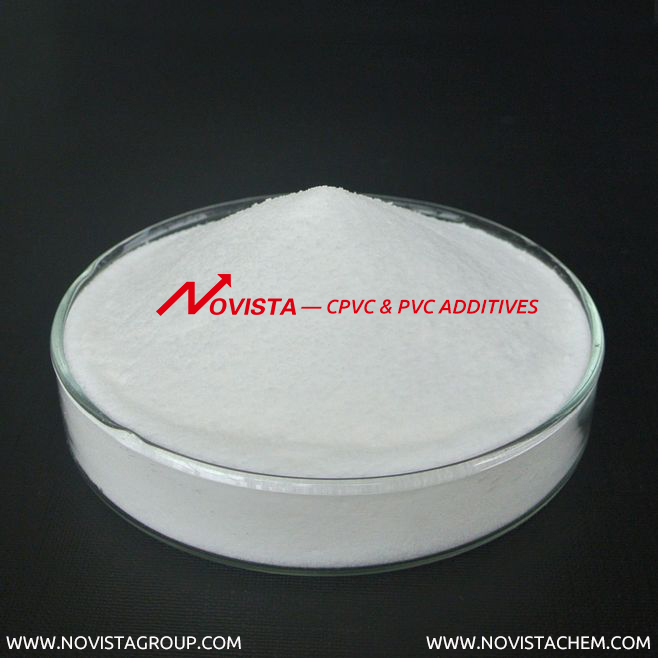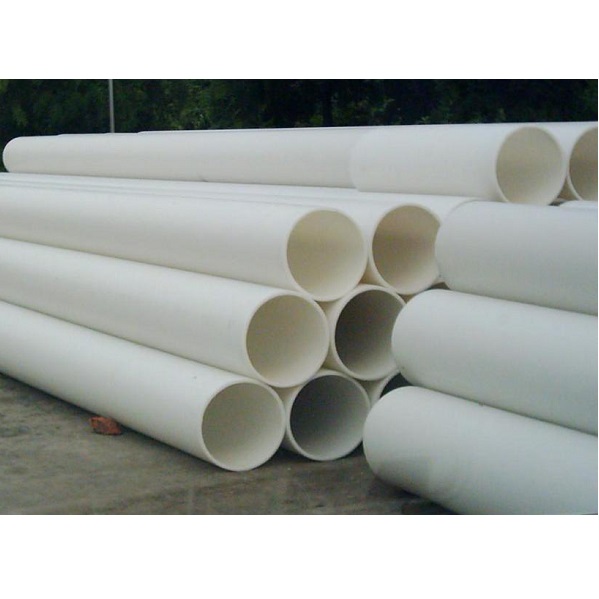
Privacy statement: Your privacy is very important to Us. Our company promises not to disclose your personal information to any external company with out your explicit permission.
![]() February 28, 2019
February 28, 2019

Hard polyvinyl chloride plastics have been widely used in various fields because of their good physical and mechanical properties, flame retardancy, corrosion resistance, and ease of processing. However, hard polyvinyl chloride is a brittle-hard polymer, which has poor impact resistance, poor processing fluidity, thermal stability, heat deformation resistance, etc., especially as a building material, and has poor impact resistance, and its products are brittle and hard. This has limited the use of rigid PVC building plastic products. To this end, impact modifiers are added to the polyvinyl chloride to toughen the modification and improve its impact strength. At present, elastomer-toughened polyvinyl chloride technology is commonly used, as well as rigid body (non-elastomeric) toughened polyvinyl chloride technology which has recently been developed.
1 Elastomer toughened polyvinyl chloride

1.1 Chlorinated Polyethylene (CPE)
Chlorinated polyethylene is produced by chlorinating high density polyethylene under suitable conditions. After chlorination, the high-density polyethylene destroys its crystallinity, makes it soft and has the properties of a rubber-based elastomer, and adds a suitable amount of chlorinated polyethylene to disperse it in a polyvinyl chloride to form an interlaced three-dimensional network structure. When the hard PVC plastic building plastic product is impacted by external force, it can absorb the impact energy, so it can improve the impact resistance of the hard polyvinyl chloride building plastic products. The compatibility of chlorinated polyethylene and polyvinyl chloride is mainly controlled by the chlorine content of chlorinated polyethylene and the distribution of chlorine atoms on the primary bond of polyethylene. Therefore, the effect of chlorine content of chlorinated polyethylene on the modification effect Very large, chlorinated polyethylene with less than 25% chlorine, poor compatibility with polyvinyl chloride, not suitable for modification of polyvinyl chloride; chlorinated polyethylene with chlorine content greater than 48%, and polyvinyl chloride Good compatibility, can play the role of plasticizer of polyvinyl chloride; chlorinated polyethylene with chlorine content of 25% to 40% is a better Impact Modifier; chlorine content is 35% to 36% The chlorinated polyethylene has a marked improvement in impact strength and is a good impact modifier.
Since chlorinated polyethylene does not contain double bonds, it can improve the weather resistance of the product, and it can also increase fluidity, plasticize and lubricate, and improve processing performance. Due to chlorine
The increase in the amount and the improvement of the flame resistance. The thermal stability of chlorinated polyethylene is better than that of polyvinyl chloride, and the price is relatively low. Therefore, chlorinated polyethylene is widely used in the production of plastic pipe and plastic door and window profiles. Modifier. In actual processing and use, too high processing temperature and excessive shear force will affect the product to improve impact resistance. From the viewpoint of the modification effect of the material, since the chlorinated polyethylene is a rubber-based elastomer, the rigidity and strength of the polyvinyl chloride are lowered while the polyvinyl chloride is toughened.

1.2 Acrylate Polymer (aCR)
The aCR impact property modifier is an acrylate polymer having a core-shell structure. The core is a lightly crosslinked acrylate rubber elastomer, and the shell is a polymer of methyl methacrylate, the particles of which are dispersed in the polyvinyl chloride, and the shell layer of the modifier has good compatibility with the polyvinyl chloride. The particles can be uniformly dispersed between the polyvinyl chloride particles to form particles with high adhesion, which enhances the ability to disperse stress. When the hard polyvinyl chloride building plastic product is impacted by an external force, the impact energy can be consumed, thereby improving the impact resistance of the hard polyvinyl chloride system material. Depending on the application, in addition to the aCR impact modifier described above, the acrylate polymer has a class of aCR processability modifiers which are copolymerized by methyl methacrylate, acrylate, etc. It can significantly improve the processing properties of PVC. There are many types of aCR. Due to the different comonomers, copolymerization methods and molecular weights, the characteristics and effects of modification are different. This is especially important in the processing technology of hard polyvinyl chloride.
The impact performance of aCR is better than that of CPE. When the same impact strength is reached, the amount of aCR is less than that of CPE. aCR has a comprehensive advantage, and it has good processing properties in hard polyvinyl chloride. This is because aCR has good compatibility with polyvinyl chloride, which can improve the gelation rate, shorten the melt plasticization time, and improve the processing ability. It also has good weather resistance and good lubricity. Since the aCR particles are uniformly dispersed in the melt, the modification effect is rarely affected by the processing temperature.
Compared with CPE, aCR is expensive. When choosing, manufacturers consider the production cost of building plastics, often CPE-based, supplemented by aCR to solve the problem of improving impact performance, processing performance and price balance. At present, aCR-based modifier systems are also used in some high-performance plastic door and window profiles and plastic pipes.
2 rigid body (non-elastomeric) toughened polyvinyl chloride
2.1 polystyrene (PS), polymethyl methacrylate (PMMa)
In the mid-1980s, foreign scholars proposed the rigid body toughening mechanism, and then the research and development of this rigid body toughening mechanism was carried out in China. In the study of toughened polyvinyl chloride, the traditional elastomer is toughened, and the rigid body (non-elastomer) is toughened, and there is a new discovery that while significantly improving the toughness of the hard polyvinyl chloride system, The rigidity and strength are less likely to be lost or improved, and the processing fluidity and the like are also improved.
The rigid body toughening mechanism believes that the matrix should have a certain strength and toughness. In addition, the rigid body and the matrix should have good compatibility and adhesion to allow stress transmission. When the above two conditions are met, the rigid organic particles are added to the matrix having a certain toughness, and the toughening modification effect can be achieved.
Polystyrene (PS) and polymethyl methacrylate (PMMa) are rigid organic particles, and the toughened matrix is a rigid polyvinyl chloride plastomer. The latter is a kind of rigid polyvinyl chloride system with certain toughness such as PVC/ CPE, etc. In fact, this binary blending system is the aforementioned elastomer-toughened polyvinyl chloride. The disadvantage is that the rigidity and strength are reduced. Therefore, a small amount of PS, PMMa rigid organic particles are added to such a certain toughness. In the matrix, the dispersed rigid particles have good compatibility with the toughened matrix, and satisfy the condition of rigid body toughening. Under the action of external force, the rigid organic particles undergo cold drawing deformation, thereby absorbing deformation energy and improving The toughness of the hard polyvinyl chloride system material significantly improves the impact strength, and the tensile strength and the like are also improved. In addition, the viscosity of the system can be lowered to improve the appearance of the product.
2.2 Low density polyethylene (LDPE), high density polyethylene (HDPE)
According to the rigid body toughening mechanism, the toughening modification of polyvinyl chloride to polyethylene is also in line with this rigid body toughening category. Low-density polyethylene is a high-toughness rigid body. It should be noted that low-density polyethylene and polyvinyl chloride are incompatible with each other due to their polarities. Therefore, it is necessary to add chlorinated polyethylene as polyvinyl chloride and low density. A compatibilizer for polyethylene. It can be considered that PVC/CPE is a tough body, and the added low-density polyethylene is a rigid body, which conforms to the condition of rigid body toughening. A small amount of low-density polyethylene rigid organic particles are added to the rigid polyvinyl chloride tough body, and the external force is applied. Under the condition, the rigid organic particles are cold-drawn and deformed to absorb the plastic deformation energy, thereby improving the toughness of the material, and the toughness is better than the PVC/CPE system, and the mechanical properties are less damaged.

High-density polyethylene is toughened with polyvinyl chloride, and chlorinated polyethylene is used as a compatibilizer. It can be considered that PVC/CPE is a tough body, and high-density polyethylene is a rigid organic particle, which can also achieve a good toughening effect. . It is known from the experiment that since the high-density polyethylene is more rigid than the low-density polyethylene, the high-density polyethylene has a better toughening effect than the low-density polyethylene.
High-density polyethylene has good processing fluidity, low-temperature resistance, etc., and high-density polyethylene toughen polyvinyl chloride while improving processing fluidity and the like. Furthermore, high-density polyethylene is an inexpensive general-purpose resin that can also slightly reduce the cost of rigid polyvinyl chloride building plastic products.
Novista GROUP is a professional manufacturer of PVC Additives for Rigid PVC products.
--Our CPE products include: CPE-135A; 6135; 135B, CM352 and so on.
--Our ACR processing aids include: Acrylic processing aids, foaming regulators, lubricating processing aids and so on...
--PVC stabilizers: Ca/Zn Stabilizer; One-pack Lead Stabilizer; Methyl Tin Stabilizer.
If you need samples for testing, or price information, please let me know.
We also welcome you to visit our factory when available.
Hope to have the opportunity to cooperate with you.
Fore more details, pls email to sales06@novistagroup.com; or send me messages by WhatsApp (0086 150 6536 1235) / Skype (neil_novista)
The above is the How to enhance the toughening of rigid PVC building plastics? we have listed for you. You can submit the following form to obtain more industry information we provide for you.
You can visit our website or contact us, and we will provide the latest consultation and solutions
Send Inquiry
Most Popular
lastest New
Send Inquiry
Send Inquiry

Mr. Ron Han
Tel:86-536-8206760
Fax:86-536-8206750
Mobile Phone:+8615336365800
Email:manager.han@novistagroup.com
Address:RM1232-1233,#4 Building No.4778 Shengli East Street, Weifang, Shandong
Related Products List
Mobile Site


Privacy statement: Your privacy is very important to Us. Our company promises not to disclose your personal information to any external company with out your explicit permission.

Fill in more information so that we can get in touch with you faster
Privacy statement: Your privacy is very important to Us. Our company promises not to disclose your personal information to any external company with out your explicit permission.